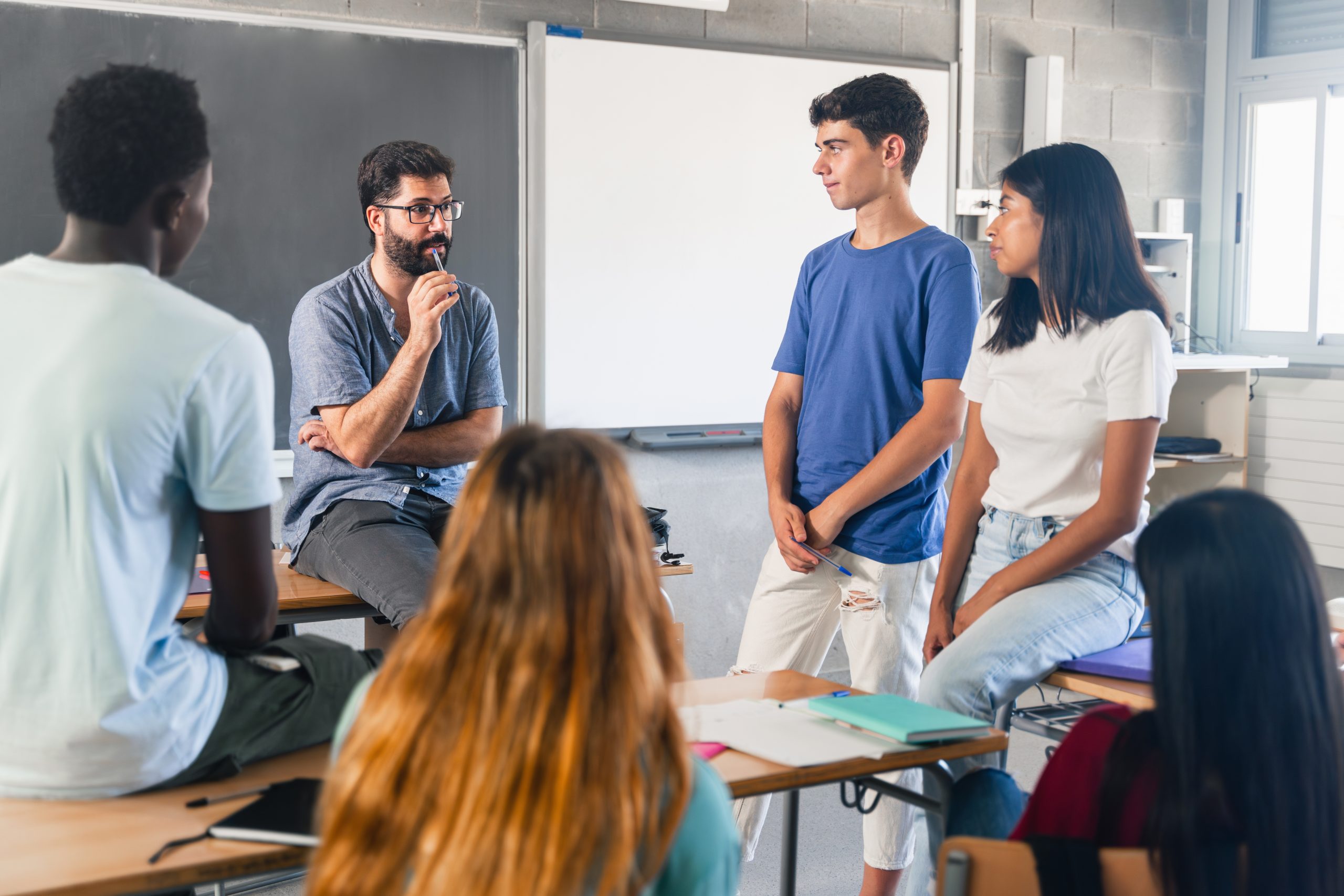Spotlight blogs celebrate excellence in our Learning Innovation Network. This is the final post in a series about mentoring, also known as advisory. In Part 1, we learned about why the staff at the West Ada Academies in Idaho moved to mentoring and the foundational tools they used to support their mentoring programming. In Part 2, we learned how relationships, routines, rituals, and systems create a vibrant culture of mentoring. In Part 3, we’ll learn about goal setting and what the West Ada Academies team learned from this shift to mentoring. This series is written by Julia Miller, Instructional Coach, Meridian Academy, West Ada School District, Idaho.
We often go back to the why of education, especially when trying to redesign it. Mentoring through the lens of building future-minded learners focuses our work on growing skills traditionally left out of education: personal development, self-regulation or even professionalism and post-secondary planning. Many mentees may not even see themselves as learners just yet, so creating opportunities through the Habits of Success continua create the pathway to more self-efficacy. Co-creating experiences through Habits of Success based on student need supports transparency and will help reinforce trust for students who are used to playing the game with no rules and feeling they cannot win.
Students sometimes want to hide from future-thinking. It can cause anxiety not knowing what is next and also not knowing how to figure it out. Creating a post-secondary plan bridges the gap between high school and that next step. College and Career Counselor, Nichole Deakins shares, “We often don’t think deeply until we start creating. Creating a plan gets students to begin thinking that way.” She also shares that sometimes, students are not ready, but still need, “a vision of what could be so when they are ready, they have the ability.”
Mentoring is a great place for exploration of this vision because of the safe space created early on. Mentors can help students see what opportunities could be by inviting experts from the field, surveying mentee interests, finding resources, providing feedback of resumes and making connections as a go-between. Another mentee shares, “We created a 5-year plan and we can change it. Sometimes we older mentees talk to the younger ones to keep them accountable. We set goals. Like, I struggle with my language so we did a week on professional language and I am way better now.”
Lessons Learned
It can be tempting to quickly turn mentoring into a planning period for the mentor and a hang out time or study hall for students. And some days, these things may be needed. Reading the room is imperative in this work. However, lack of planning and unintentional use of time can become the norm and a bad habit, devaluing and undermining the true purpose of mentoring to begin with and results in wasted opportunities for mentees. Mentors are facilitators of personal development and are the rockbed of our school. Their influence to impact culture and student growth on self-regulation, work habits, identity and purpose cannot be overstated.
If you value relationships as strongly as we do, it’s also possible to breach boundaries. It is important to know when the role of the mentor ends and the need to hand off to licensed professionals in the building begins. According to school counselor, Megan Peterman:
“Those really close mentor relationships are so valuable in the school and it can be easy for kids to want to talk to mentors because they see them everyday. When dealing with heavier things at home or school, a mentor can use that relationship to bridge the gap. The mentor can connect the student to the counselor, help build that connection, make sure they are comfortable and step back to allow an empowered relationship to solve bigger problems.”
Seeing mentors as connection-creators rather than an isolated adult with the lives of teens in their hands can help maintain those healthy boundaries. Mentees can receive the care from each team member designed and trained for their specific and designated role.
Finally, this work is impossible to do alone. Whether it’s a personality clash, a lack of inspirational ideas, or a need for a template or resource, it’s important to reach out to other mentors for support. After all, isn’t that what we’d tell our students to do, to use their tools? We have to remember mentors are human, too. An individual mentor doesn’t have all of the answers, but if we seek support from our village, we will have plenty of answers to guide us through the mentoring journey.
Mentoring is a student-centered, transformational shift in education. It requires all hands on deck with the same mission: creating a safe space for all to build relationships, community, and ownership in order to partner in progress and build future-minded learners.
Take a look at our Teacher Competencies and Habits of Success Competencies mentioned in the blog.
If you’d like to request a free consultation with Building 21 to see how we can help you develop a mentoring program or personalized learning systems, please reach out to us here.
Author

Julia Miller has been a teacher and instructional coach in the West Ada School District for eight years. She has a passion for learner-centered systems. You can contact her at Miller.Julia@westada.org.




